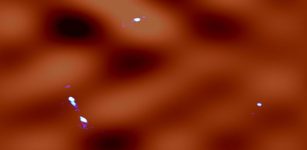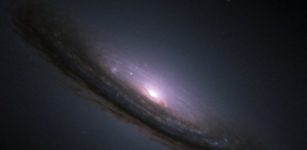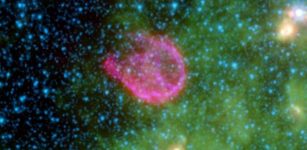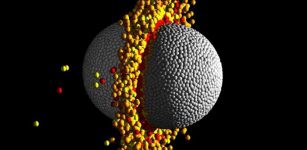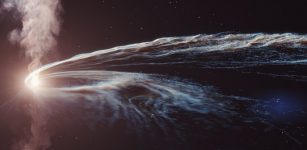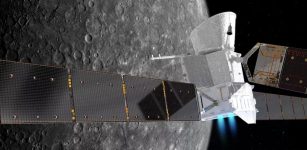Ancient Stars Found In Milky Way’s Stellar Thin Disk
Eddie Gonzales Jr. – MessageToEagle.com – Gaia mission data revealed a surprising discovery about our galaxy’s evolution. Many ancient stars orbit similarly to our sun, forming the Milky Way’s thin disk less than 1 billion years after the Big Bang—several billion years earlier than previously thought.
Rotational motion of young (blue) and old (red) stars similar to the Sun (orange). Credit: Background image by NASA/JPL-Caltech/R. Hurt (SSC/Caltech)
The Milky Way consists of a halo, central bulge, bar, and two disks: thick and thin. Most stars, including our 4. 6-billion-year-old sun, reside in the thin disk, rotating around the galactic center. This disk was believed to have formed 8 to 10 billion years ago.
A key goal of galactic archaeology is understanding the Milky Way’s formation. This requires detailed chrono-chemo-kinematical maps showing stars’ ages, chemical compositions, and movements. Creating these maps is challenging due to the need for large datasets of stars with accurate age information.
To understand the early Milky Way, scientists study very metal-poor stars. These stars formed when the universe was mostly hydrogen and helium, before later generations of stars created and distributed heavier elements. Their low metal content indicates their old age, offering insights into the galaxy’s early history.
An international team led by astronomers from the Leibniz Institute for Astrophysics Potsdam studied stars within 3, 200 light years of the sun using ESA Gaia Mission data. They found an unexpected number of very old stars in thin disk orbits, most over 10 billion years old, with some exceeding 13 billion years.
“Ancient stars in the disk indicate the Milky Way’s thin disk formation began 4–5 billion years earlier than previously thought,” study lead author Samir Nepal from the Leibniz Institute for Astrophysics Potsdam (AIP) said in a press release.
This study reveals the Milky Way’s early intense star formation led to rapid metal enrichment in inner regions and disk formation. The discovery aligns our galaxy’s timeline with high-redshift galaxies observed by JWST and ALMA. Nepal notes that ancient disk stars indicate the Milky Way’s thin disk formed 4–5 billion years earlier than previously believed.
Cold disks can form and stabilize early in the universe, offering new insights into galaxy evolution.
Our study indicates the Milky Way’s thin disk likely formed earlier than previously believed, closely tied to the chemical enrichment of the galaxy’s inner regions. By combining diverse data sources and advanced machine learning, we expanded our sample of stars with high-quality parameters, leading to these new insights, according to Cristina Chiappini.
The Gaia mission’s third data release enabled analysis of over 800, 000 stars using a new machine learning method. This technique combines various data types to provide precise stellar parameters, including gravity, temperature, metal content, distances, kinematics, and age.
A similar approach will be used to analyze millions of spectra from the 4MIDABLE-LR survey, starting in 2025 with the 4MOST telescope.
Written by Eddie Gonzales Jr. – MessageToEagle.com Staff Writer



